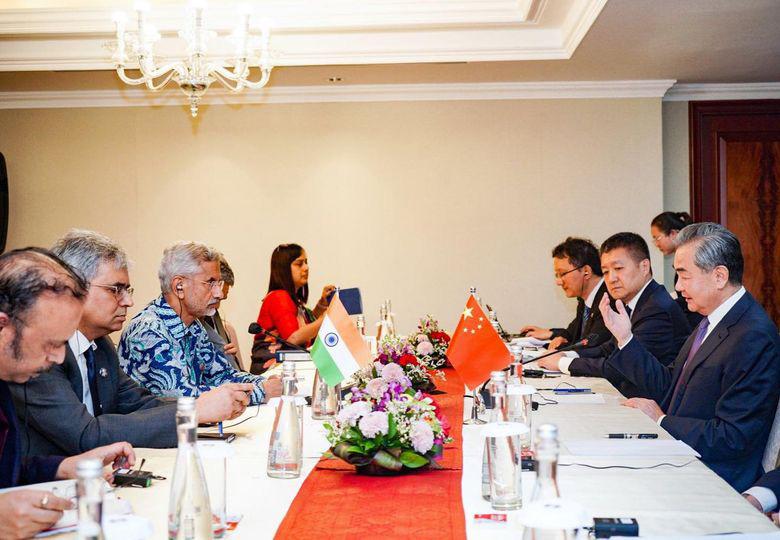
4 minute read
India-China relations far from being normal, yet
From the editor’s desk
India’s External Affairs Minister S Jaishankar has often reiterated that India and China relations are not normal and cannot be so till peace in border areas returns. This has also been the conviction of many foreign relations experts in India and elsewhere. Yet India being a peace-loving nation has never had completely given up the efforts to resolve bilateral issues through dialogue. But talking for peace and expecting the other party will reciprocate is no longer India’s policy given its past experiences. India cannot remain militarily weak given the fact that it has two neighbours in China and Pakistan who are always looking for an opportunity to strike hard at India’s territorial integrity. But India still believes in talks, and in the modern era of nuclear weapons, that is the best and only option.
Moreover, since India’s Independence, India has always been against war, and as one of the founding members of the nonaligned movement, India has worked towards discouraging countries hell bent on fighting it out on the battlefield. Given the fact that modern warfare is no longer about being confined to a specific location or ground, and the weapons are more tailormade for mass destruction, peace is the only alternative for all parties, for both the winners and the vanquished. More accurately, there are no winners in modern wars, Russia-Ukraine war being a current example in view.
Therefore India’s External Affairs Minister Jaishankar on July 14 discussed “outstanding issues” along the Line of Actual Control (LAC) with top Chinese diplomat Wang Yi along the sidelines of the East Asia Summit (EAS) in Jakarta.
As a matter of fact and what should be seen as India’s honest attempt to normalize relations with China, July 14 meeting was Jaishankar’s third high-level dialogue with the Chinese side in recent months, after bilateral talks during visits by Foreign Minister Qin Gang to India for the G-20 Foreign Ministers’ meet in March and for a Shanghai Cooperation Organisation meeting in May.
India’s Minister has alwaysbeen precise in his objective in all of his meetings with Chinese leaders. For instance, in both meetings with Qin, Jaishankar underscored the importance of peace on the LAC as a necessary precondition for the restoration of normalcy in India-China relationship. At the recent meeting in Jakarta, he again asked China to take steps towards disengagement of troops in the two remaining friction points.
While the third meeting between the two Foreign Ministers in Jakarta, could not take place owing to Qin being unable to travel because of reported health issues, Jaishankar had to meet Qin’s predecessor, Wang Yi, who was elevated to the Politburo and also heads the ruling Communist Party’s Central Commission for Foreign Affairs.
Significantly, the meeting between the two Foreign Ministers in May was what India’s Foreign Minister had termed as “frank” discussion on the border. India had clearly stated, and rightly so, that relations with China were not normal and could not be normal if peace in border areas was not restored. In a situation where troops are engaging instead of the leaders of the two sides, bilateral relations can never be normal. In fact, the border situation continues to be highly volatile and tensions have not altogether disappeared.
Qin had also responded to India’s call for peace in border areas by calling on both countries “to draw experience and lessons from history” and “steer bilateral relations from a strategic and long-term perspective”. Moreover, Qin wanted both sides “to consolidate existing outcomes, strictly abide by relevant agreements and protocols, work to ease and cool down the border situation, and maintain sustained peace and tranquility in the border areas.” But these words appear to be more rhetoric than having any desire to implement them fully on the ground, as of now.
At the moment both sides have disengaged in five areas, though thousands of troops still remain deployed in forward areas close to the LAC. According to Indian officials, negotiations to restore peace and complete disengagement in all seven friction areas have been slowmoving so far. This raises the possibility of tension if things go even a little bit out of hand.










